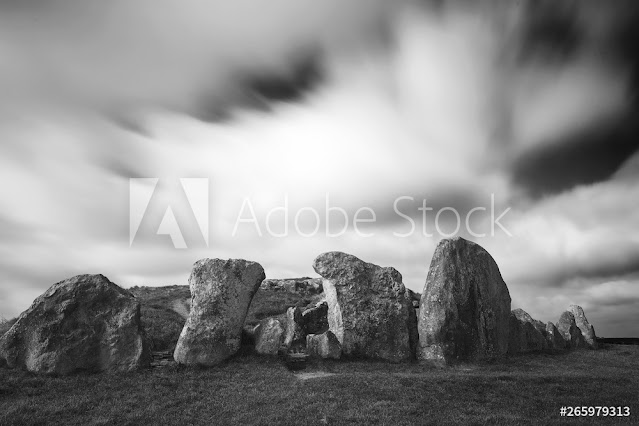Avebury is a Neolithic henge monument containing three stone circles, around the village of Avebury in Wiltshire, in southwest England. One of the best known prehistoric sites in Britain, it contains the largest megalithic stone circle in the world. It is both a tourist attrction and a place of religious importance to contemporary pagans.
Constructed over several hundred years in the Third Millennium BC, during the Neolithic, or New Stone Age, the monument comprises a large henge with a large outer stone circle and two separate smaller stone circles situated inside the center of the monument. Its original purpose is unknown, although archaeologists believe that it was most likely used for some form of ritual or ceremony. The Avebury monument is a part of a larger prehistoric landscape containing several older monuments nearby, including West Kennet Long Barrow, Windmill Hill and Silbury Hill.
The history of the site before the construction of the henge is uncertain, because little datable evidence has emerged from modern archaeological excavations. Evidence of activity in the region before the 4th millennium BCE is limited, suggesting that there was little human occupation.
Avebury henge and stone circles are one of the greatest marvels of prehistoric Britain. Built and much altered during the Neolithic period, roughly between 2850 BC and 2200 BC, the heng survives as a huge circular bank and ditch, encircling an area that includes part of Avebury village. Within the henge is the largest stone circle in Britain-originally of about 100 stones which in turn encloses two smaller stone circles.
MEDIEVAL AND MODERN HISTORY
In the Middle Ages the stones may have been associated with pagan and devil worship and many were either buried or destroyed. Later building and agricultural improvements led to others being removed. Records and maps made by early antiquarians such as John Aubrey and Willian Stukeley give us some clues as to its former layout.
The appearance of the site today, however, owes much to Alexander Keiller, heir to a fortune made from the famous Keiller marmalade, who bought the site and cleared away buildings and re-erected many stones in the late 1930s.
Today, Avebury along with Stonehenge is designated a World Heritage Site.





